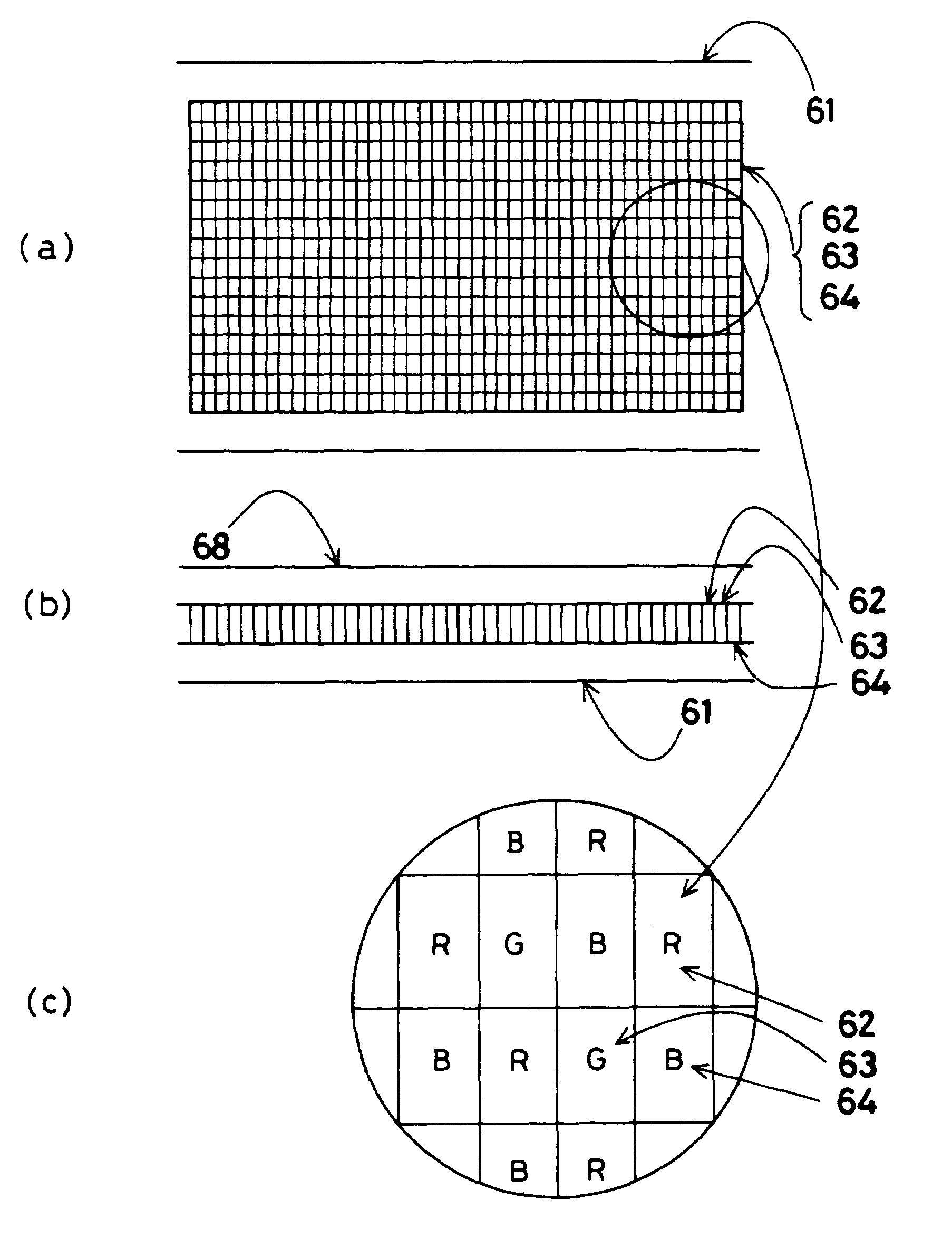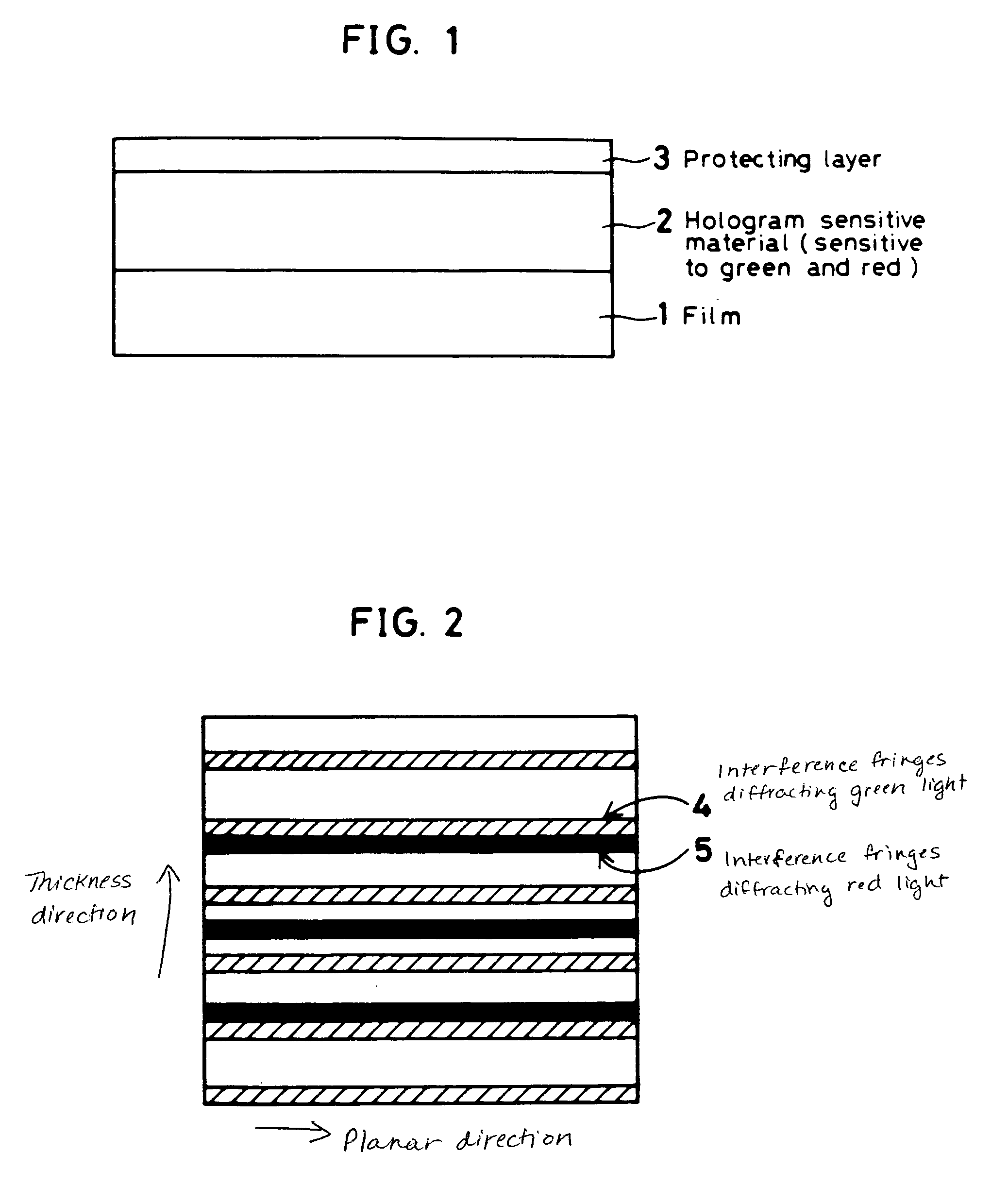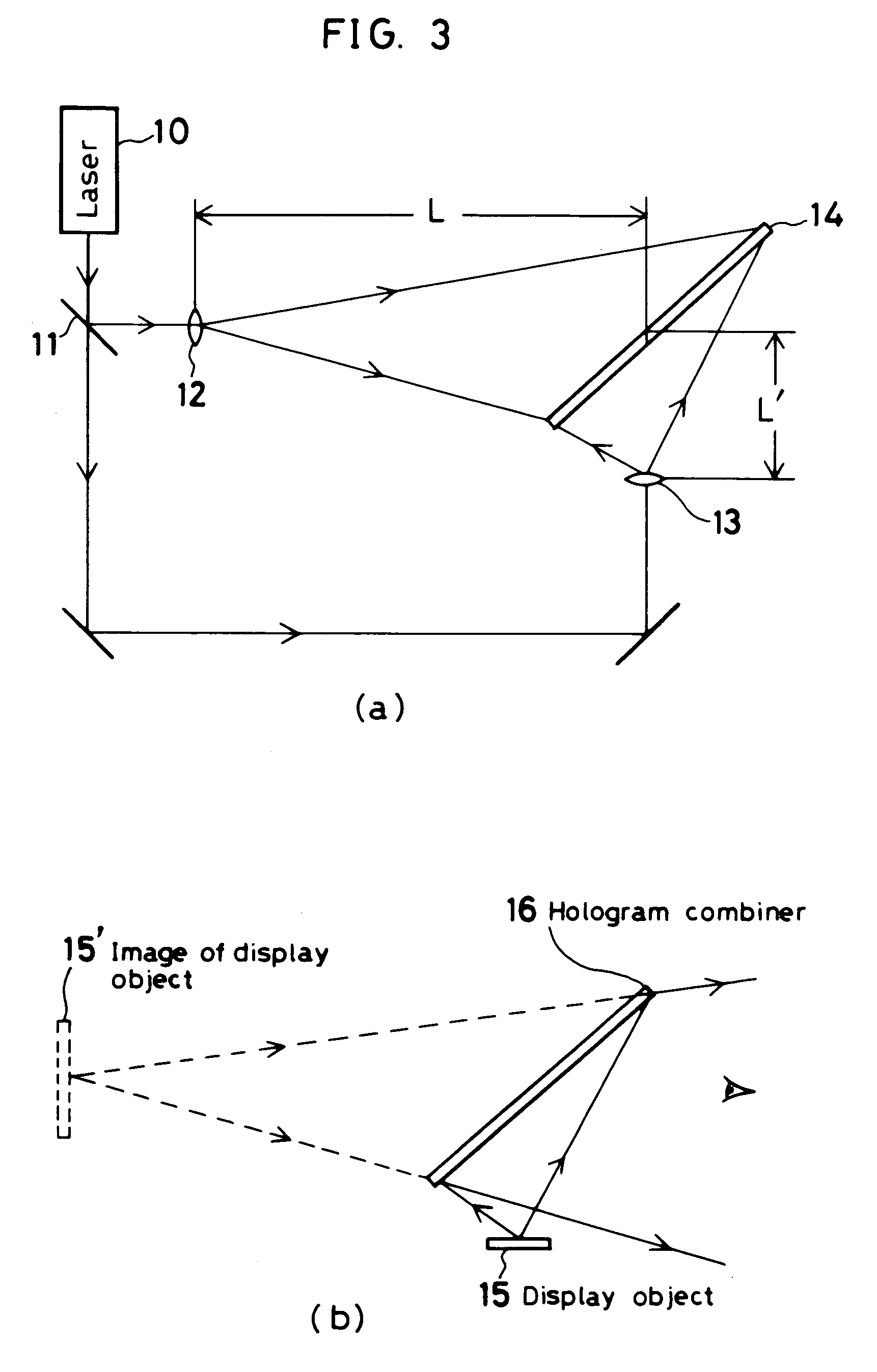Hologram recording sheet, holographic optical element using said sheet, and its production process
a technology of optical elements and recording sheets, applied in the field of hologram recording sheets, can solve the problems of inferior image quality such as ghost images, impose considerable limitations on the hologram recording material to be used, and achieve the effect of good quality
- Summary
- Abstract
- Description
- Claims
- Application Information
AI Technical Summary
Benefits of technology
Problems solved by technology
Method used
Image
Examples
example 1
[0087]For a solution sensitive to green light, 50 parts of polyvinylcarbazole, 40 parts of tribromophenoxyethyl methacrylate, 1 part of cyanine dye (NK-1420 made by Nippon Kanko Shikiso Co., Ltd.), 5 parts of 3,3′,4,4′-tetra(t-butylperoxycarbonyl)benzophenone, and 5 parts of a nonylphenyl alcohol / ethylene oxide adduct (Emulgen 903 made by Kao Soap Co., Ltd.) were dissolved in methyl ethyl ketone. For a solution sensitive to red light, 50 parts of polyvinylcarbazole, 40 parts of tribromophenoxyethyl methacrylate, 1 part of squarylium dye (NK-3024 made by Nippon Kanko Shikiso Co., Ltd.), 5 parts of 3,3′,4,4′-tetra(t-butylperoxycarbonyl)benzophenone, and 5 parts of a nonylphenyl alcohol / ethylene oxide adduct (Emulgen 903 made by Kao Soap Co., Ltd.) were similarly dissolved in methyl ethyl ketone. These solutions were printed on a 50 μm PET film (HP-7 made by Teijin Limited) by screen printing using a 150-mesh screen printing plate and then dried to form 10 cm·10 cm green-light sensitiv...
example 2
[0089]Methyl ethyl ketone solutions of the same photosensitive solutions as in Example 1 were printed on a 50 μm PET film (HP-7 made by Teijin Limited) by die coating using a slot orifice having different discharge ports of 25 cm and 5 cm, and then dried to form the green- and red-light sensitive materials, each having a thickness of 20 μm, according to the striped pattern shown in FIG. 8(b). This sheet was further laminated thereon with a PET film (Lumilar T60 made by Toray Industries, Inc.) and then rolled up.
[0090]Using 514 nm argon laser light and 647 nm krypton laser light as light sources, a head-up display combiner was produced on this hologram sensitive material by the sequential exposure technique. Consequently, a satisfactory speed-indicating projection chart was obtained, which included the speed indicator 46 projected in green color in the green-light diffracting zone 44 and the emergency warning light 47 projected in red color in the red-light diffracting zone 45, as sh...
example 3
[0098]The same green- and red-light sensitive solutions as in Example 1 were dissolved in methyl ethyl ketone at a solid content of. 20 wt %. The resulting solution for green light was coated on a 50 μm PET film (HP-7 made by Teijin Limited) at a dry coverage of 25 μm by gravure coating using a gravure roll. Laminated on this layer was a 25 μm PET film (HP-7 made by Teijin Limited) treated on both it sides, on which the sensitive solution for red light was further coated at a dry coverage of 25 μm by gravure coating using a gravure roll. This sheet was laminated thereon with an additional PET film (Lumilar T60 made by Toray Industries, Inc.) and then rolled up.
[0099]Using 514 nm argon laser light and 647 nm krypton laser light as light sources, a head-up display combiner was produced on this hologram sensitive medium. Consequently, such a satisfactory speed-indicating projection chart as shown in FIG. 14 was obtained.
PUM
 Login to View More
Login to View More Abstract
Description
Claims
Application Information
 Login to View More
Login to View More - R&D
- Intellectual Property
- Life Sciences
- Materials
- Tech Scout
- Unparalleled Data Quality
- Higher Quality Content
- 60% Fewer Hallucinations
Browse by: Latest US Patents, China's latest patents, Technical Efficacy Thesaurus, Application Domain, Technology Topic, Popular Technical Reports.
© 2025 PatSnap. All rights reserved.Legal|Privacy policy|Modern Slavery Act Transparency Statement|Sitemap|About US| Contact US: help@patsnap.com



